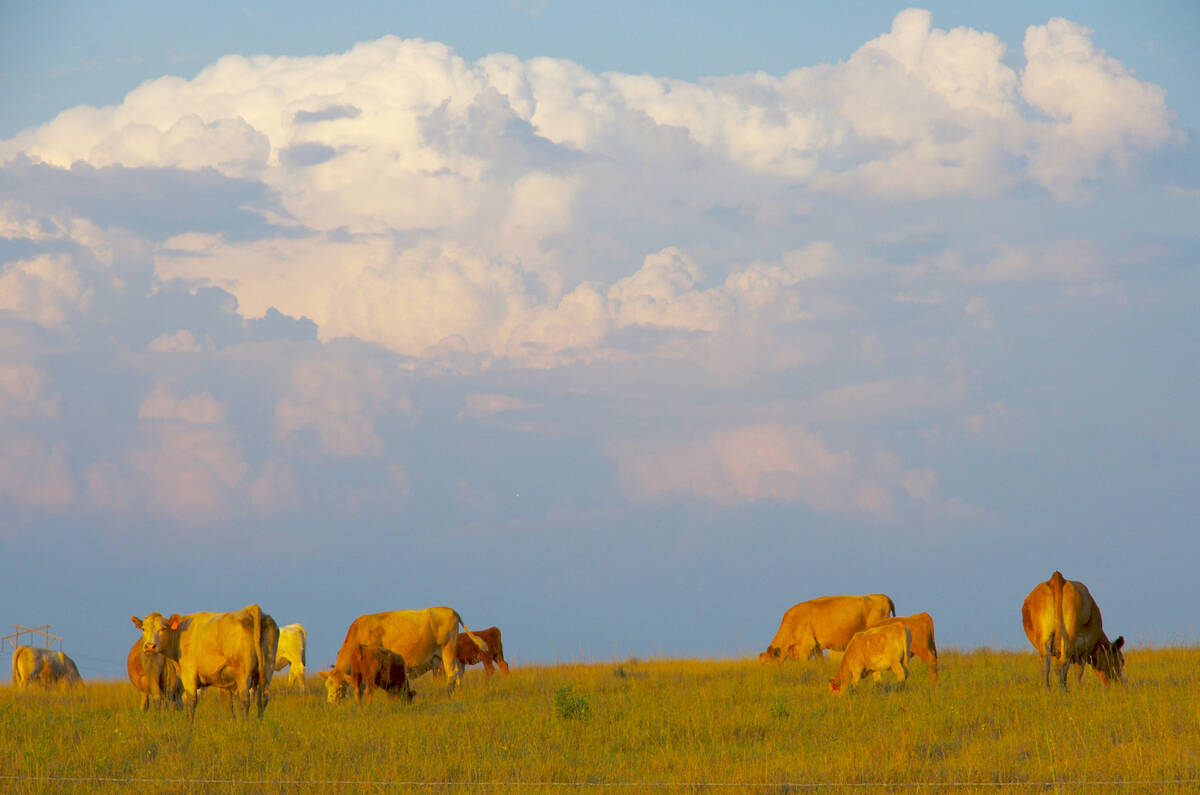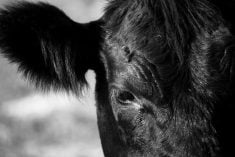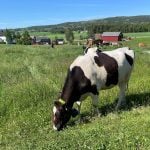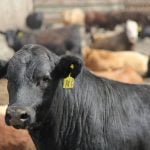Through my years in practice and my career afterwards, I could never accept the fact that some producers starve cattle. Malnourished cattle almost always occurred through winter and, inevitably, the lack of care of the cow herd meant all animals on a particular farm or ranch suffered. Horses were bone racks, the farm dog skeletal, cats gaunt and the chickens stopped laying eggs.
On one farm I became involved with, the owner had 15 dogs. The dog pack was well-known. My passenger one day, a young student working for the SPCA, asked where all the dogs were when we drove into the yard.
- READ MORE: Assessing malnutrition in beef cows: Part 1
“Just wait,” I said, as we rattled through snowbanks toward the barn. Suddenly all 15 dogs appeared over the rib cages of four dead cows in the corral. They had eaten the visceral contents and were using the carcasses as shelter. “Don’t fall down,” I said, partially as a joke, “and carry the cane I gave you at the clinic at all times to keep the mongrels at bay.” The young inspector stared in amazement at the spectacle.
Several times in my career, animal welfare agencies asked me to manage severely malnourished herds. My job: to oversee the care necessary to salvage impounded herds so they could be sold through an auction market. Severely malnourished herds were often deemed unsaleable with downer animals among the sick and dying.
Read Also

Canadian Beef Check-Off Agency reports on investments and activities
The check-off agency’s work behind the scenes is what ensures cattle check-off dollars are invested wisely, accounted for transparently and deliver measurable value back to producers and importers.
Veterinarians reluctantly become involved out of professional responsibility despite the fact these jobs are thankless. Other diseases are often in the mix, such as abomasal impaction, Johne’s disease, parasitism, respiratory infections and conditions related to vitamin and mineral deficiencies. Often, owners are angry that others have invaded their space and access involves being accompanied by police. Others in the community generally support efforts to relieve animal suffering, but there are always a few that feel involvement ranks as interference and shrug it off as “It’s always been that way.”
Little written guidance exists on how veterinarians should plan and deliver service in cases involving starving herds. Very few scientifically peer-reviewed papers on the matter exist. I have chosen two references for this article: Impact of Animal Nutrition on Animal Welfare, a September 2011, FAO Expert Consultation (40 pages), and a paper out of the University of Tennessee, UT Extension, Institute of Agriculture, titled Managing Malnourished Beef Cattle, lead author Justin Rhinehart, assistant professor and UT extension specialist.
In their review of the effect of nutrition on animals, the FAO considered:
- Identification of feeding options for different livestock production systems.
- Challenges and opportunities to enhance animal welfare through animal feeding approaches.
- Draft guidelines and policy options promoting sustainable feeding practices.
Starvation should be considered when:
- Body condition scores are one.
- Animals have had no feed in the last five days.
- Animals have lost more than 20 per cent of their body weight over the last 60 days.
- Cattle have trouble walking or become “downers,” unable to stand after lying down.
Good histories are critically important. Capture the following:
- How long have cattle been on this farm?
- What feed and how much has been available?
- What is the water source and its availability?
- Have there been any recent health problems?
- What is the age and pregnancy status of the animals?
- History of the care and management of cattle on this premise.
Another important step is taking an inventory of the herd:
- Number of cows, calves, bulls and yearlings.
- Number of animals at a body condition score of one.
- Available shelter and protection from the elements.
- Number of dead animals and number beyond salvage.
- Number of bulls and steers. Separate bulls from the herd to prevent injury from mounting activity.
- Groups of cattle that are candidates for euthanasia (injectable euthanasia agents and/or gunshot are acceptable).
- Cattle considered not saleable and those where adequate care cannot be provided for economic or logistical reasons.
- Downer cattle that don’t respond within 48 hours of care starting.
- Cattle that don’t eat within 48 hours of feed being provided.
- Cattle with serious injuries or health problems. Starving animals that become recumbent in cold weather with no bedding will often have frozen limbs.
- Cattle still weak after 14 days of feeding.
- Cattle whose body condition does not improve after 60 days of adequate feeding.
When dealing with starving herds there will always be animals that must be disposed of, requiring appropriate arrangements. Depending on the presence of other diseases, post-mortem and diagnostic arrangements need to be made.
To begin feeding starved cattle, the number involved and feed sources require consideration. Season comes into play. Supplemental feed for starving cattle should be moderate in energy (55 to 70 per cent TDN), contain moderate amounts of protein (10 to 14 per cent) and be high in digestible fibre. Good quality hay is generally a good choice. A complete vitamin mineral mix should be available free choice. Fresh water is essential and should be available at all times.
Malnourished cattle require shelter. As well, recovering cattle are at risk of other diseases requiring ongoing surveillance. Deworming is recommended but running them through a chute may present problems. Products that can be administered in feed can be used e.g. fenbendazole feed preparations.
All veterinarians should think about how they would manage the recovery of starving cattle. It’s good to have a to-do list if ever thrown into the difficult situation of managing starvation. Consider it a blessing if it never comes to be.

















